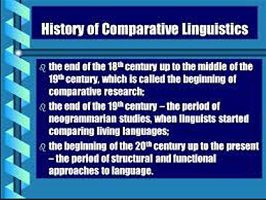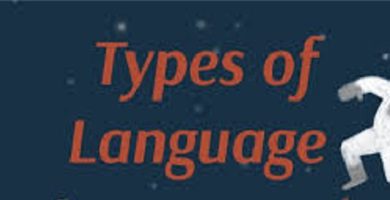Cross references concept functions with examples
Cross references
The cross – references are a resource that allows cite an idea within a text to strengthen the understanding of a concept. These can refer to information located in the same text or outside of it. They are usually placed in a look-up table organized in rows and columns. Also in short explanatory footnotes.
The basis of the word “reference” comes from the Latin fer (verb to carry). Its composition includes the prefix “re” (denotes reaffirmation or reiteration), plus the suffixes “nt” (agent) and “ia” (indicates the abstracts of condition). Therefore, its etymological concept is “that or that (a) with the quality of carrying”.
On the other hand, “crusade” is a term originating from cruxis (cross in Latin) in combination with the suffix “ada”. The latter determines action or effect. Therefore, a cross-reference can be defined as an indication that refers the reader to another paragraph, segment or chapter within a text.
What are cross references for? Features
Cross references serve as an intertextual connection tool. That is, they intertwine information within the same text. With this they strengthen the knowledge of the reader.
Despite the absence of strict rules on their use, the signs used are explained (almost always) at the beginning or at the end of a text.
Indicative function
When a document has extensive technical or very specific definitions, the use of cross references helps to keep the writing fluent. They are usually marked in the texts with the following symbols:
– The letter “v” in allusion to “see” (or the same complete word) applied directly with the indicated reference.
– The sign «cfr» indicates «confront yourself». That is, compare with the reference next to which it is placed.
– By asterisks or numbers placed in superscript. Then the reference appears as follows: “referenced definition * or [ superscript number ]”, for example, “definition 1 “, “referenced word *”.
Bibliographic function
The cross references can be related to a bibliography placed briefly within the text. A clear example is at the end of a scientific article .
In this case, there are also no fixed rules for their placement, since they vary according to the type of magazine, book or publishing house.
Technical functions in writing
The uses of cross references are very valuable within document writing. The most frequent are mentioned below:
– They facilitate the reading and understanding of the text where they are used.
– They provide a better organization of the body of ideas. Therefore, it is a very useful tool for ordering long explanations or descriptions that contain many technicalities. For example: technical words specific to a topic.
– The use of cross references allows an easier update of the information of a document.
– The texts are presented in a way in which it is easier to expand their volume of data. Through the use of cross references it is easier to create diagrams.
– In the same way, this type of resource in the writing encourages a better understanding of diagrams. This is achieved with interconnected concepts through the so-called “transversal axes”.
For the reason explained above, they are frequent in administrative or logistical databases. Such is the case of tables of orders and merchandise inventories.
– Enables more accurate source checking. For this reason, they are highly appreciated in the preparation of scientific articles and in all kinds of research.
Connective function
The software for preparing digital documents (office automation) have functions created to link two elements of the same document that are in different locations. Word or Google Docs are some of them. These types of references are common in:
– Titles.
– Subtitle.
– Footers.
– numbered paragraphs.
– Markers.
In this way, the editor can produce a well-organized document in which any information related to a subject can be automatically connected. Practically, cross-references in a digital document fulfill the function of hyperlinks on web pages.
Function of cross references on the internet
When Internet users explore the web, they usually find articles or documents with highlighted words or phrases. These are usually underlined and of a different color from the rest of the text. These are hyperlinks that when clicked by the user lead to another page with the corresponding explanation.
Similarly, a hyperlink used as a cross-reference on the internet can quickly lead to a section within the same page. As with cross references in texts, this type of hyperlinks can be linked to a bibliography.
Examples of cross references
Asterisk
In this example the cross reference is done using the asterisk.
Iñaki Angulo, a Bein Sports correspondent, spoke on his YouTube channel about other sports journalists who constantly use the so-called referee balance * in a biased way.
Angulo argues that “the volume of data cannot be limited to one or two seasons,” since a true statistical trend is determined over a period of at least a decade.
Consequently, it is incorrect to speak of “trend” if the analysis of the numbers does not cover a significant period of time. That is, not only is it wrong to draw conclusions based on data from just a season or two, it is also a lack of professionalism in journalism. Cross references concept functions
* Referee balance: value obtained from the sum of the penalties called in favor together with the red cards of the rivals, minus the penalties called against and the own expulsions.
Bibliographic reference
In this example, the cross-reference is done by mentioning a bibliographic reference.
According to the production company MK Room 1 , Thelonius Monk was probably the most peculiar character among the great pianists in the history of Jazz. He was a true individualistic genius capable of crafting unique scores under his own rules. His legacy is immortal, thanks to an authentic style, very different from the musical fashions of his time.
The way he used the instrument also set Monk apart from other artists. Because – contrary to most of the technical recommendations of piano instructors – the “playful” Thelonius played with his long fingers fully extended, stiff. Despite this, his compositions are incredibly symmetrical.
1 MK Room: Collection “Great Jazz Masters”. 2008. The Marketing Room SA 2008. Ref .: 00111.
Talk everyday
In any conversation it is usual to use this resource, for example to broaden the topic of the moment or to refer to past conversations. Cross references concept functions
Teresa told me that. Do you remember Teresa, Roberto’s daughter?
Indices
Perhaps the most widely used cross-reference in written texts is the index that allows structuring a text and referencing the place, such as the number of pages or where each of its parts are.
Introduction, p. 1
Development, p. two
Conclusions, p. 3
See, see or V
It is common to find explicit references that refer to another page, document or to a table or diagram.
See diagram 1
See table 4
V. page 12
Confront, Cf. or Cf.
The term confront is used when you want to recommend the reading of some source, with the purpose of comparing its information with other sources.
On the distinction between information discourse and literary fiction, cfr. the well-known and disputed text of the other author.
Ditto and ibidem
In the case of citations in research papers, the terms Idem and ibidem are used when the references are the same as the previous one. Cross references concept functions
Newton was then preoccupied with another “occurrence of his own fantasy, about a way to show the diurnal motion of the Earth” (ibid., 301) .

